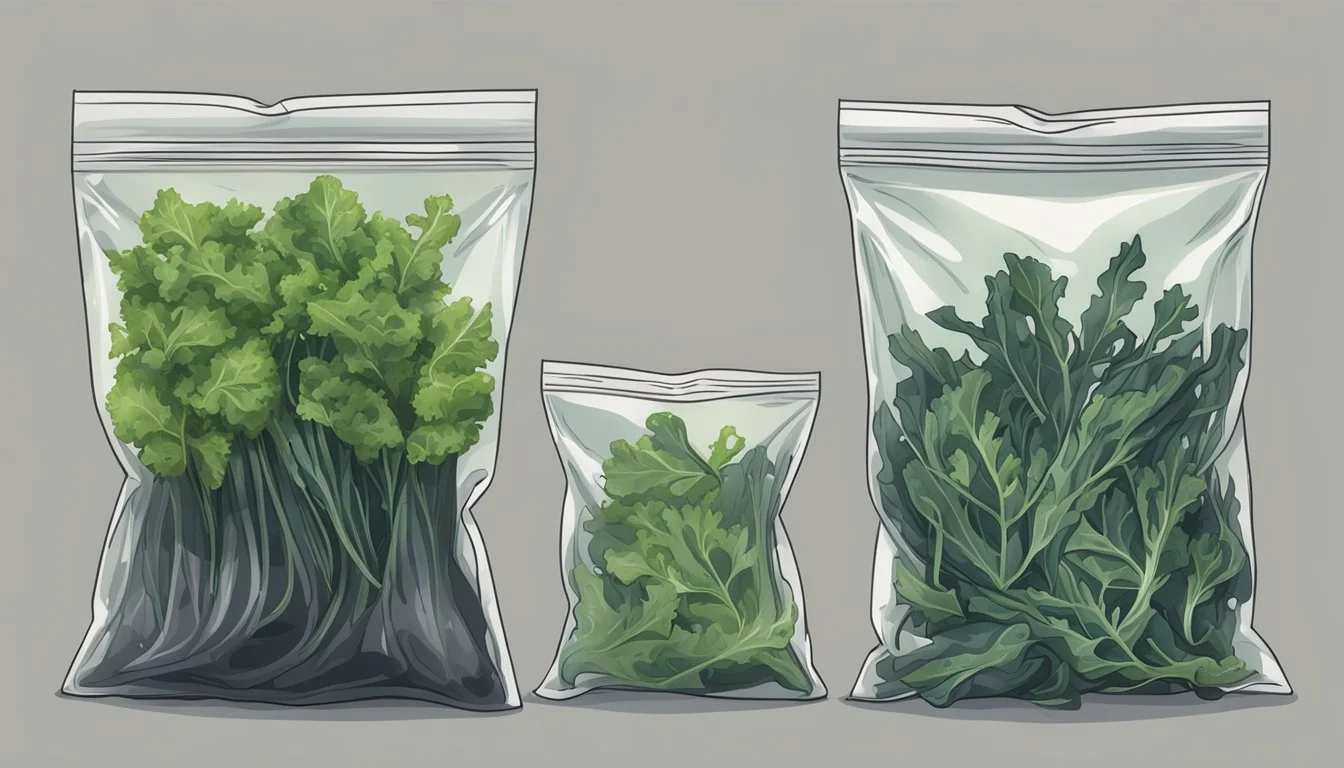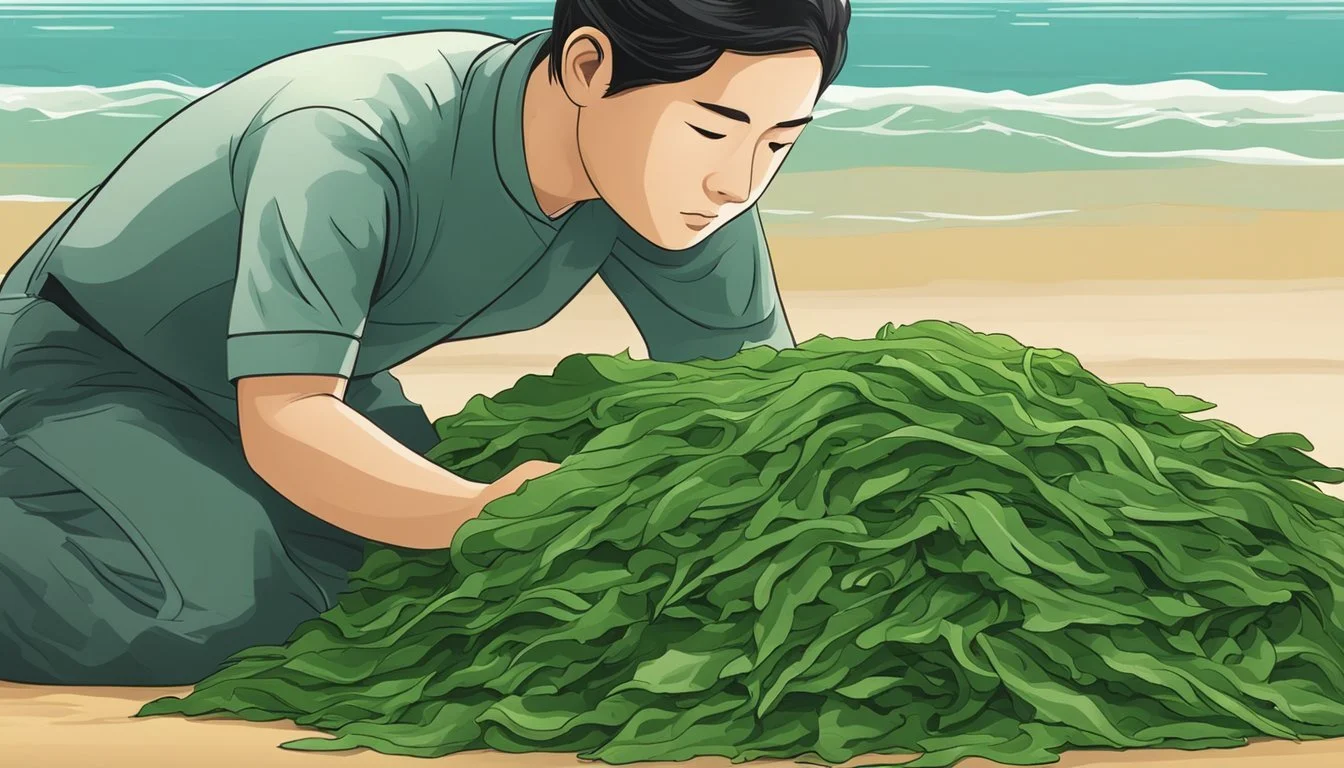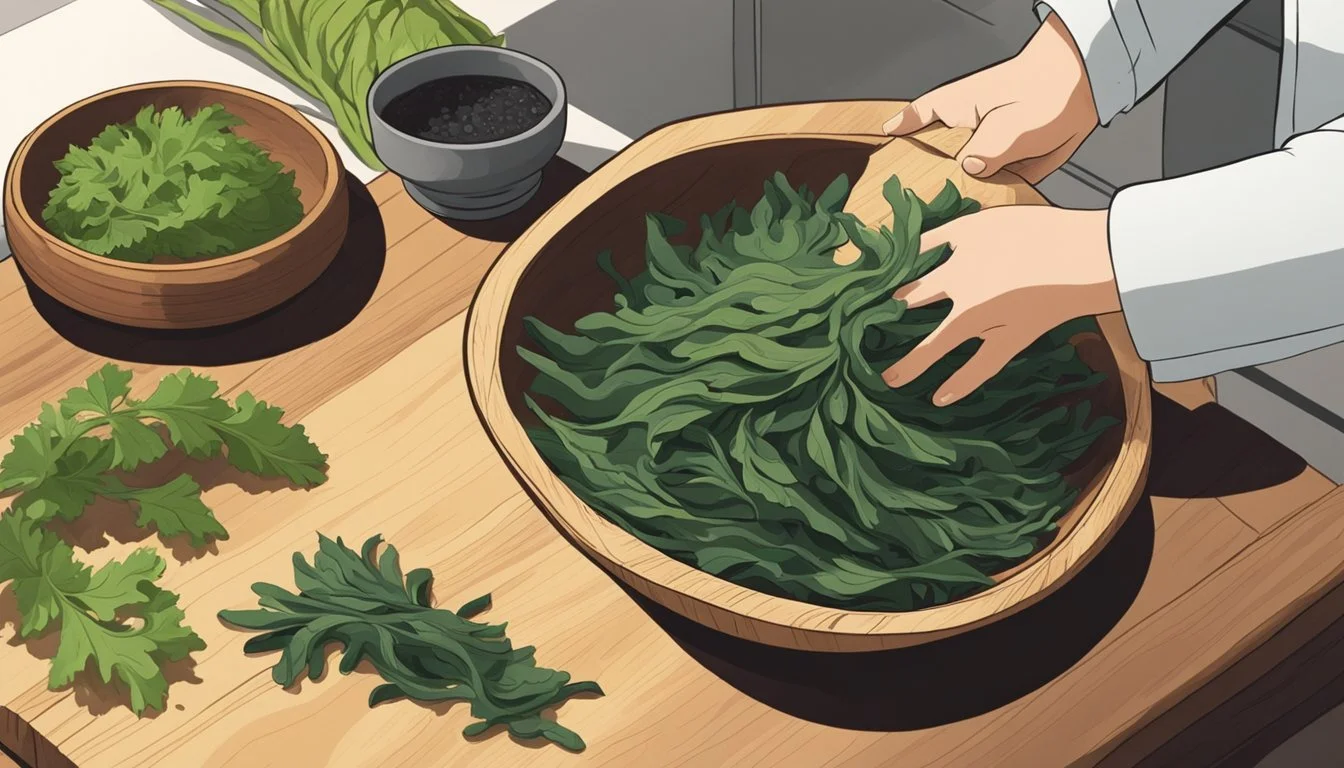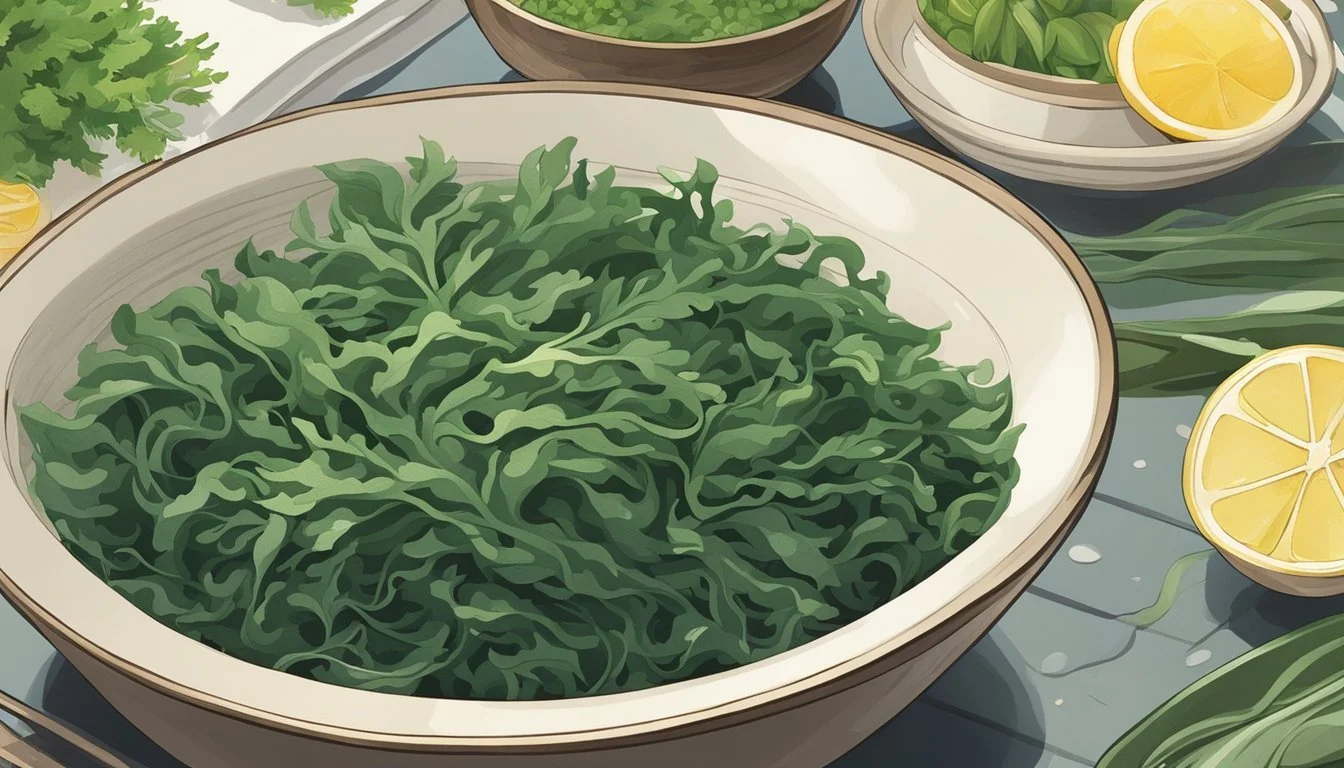Does Wakame Go Bad?
Understanding Shelf Life and Storage Tips
Wakame, a popular seaweed in Japanese and Korean cuisine, is often used in soups, salads, and various dishes. While it adds a nutritious and savory touch to meals, it does have a shelf life that consumers should be aware of. Yes, wakame can go bad, but its longevity depends on its form and storage conditions.
Fresh wakame seaweed tends to spoil faster compared to its dried counterpart. Properly stored dried wakame can last for several months, but it should be kept in an airtight container to maintain its quality. Exposure to moisture and air can accelerate spoilage, making it crucial to follow recommended storage practices.
To determine if wakame has gone bad, one should use sensory indicators such as smell and taste. Fresh wakame should have a mild, oceanic smell, whereas any sour or off-putting odor indicates spoilage. Likewise, watame that tastes overly tangy or bitter should be discarded. These practical tips ensure that the seaweed remains a safe and enjoyable addition to your meals.
Understanding Wakame
Wakame is a type of edible seaweed, known for its rich nutritional profile and various health benefits. This section explores the different types of wakame and its nutritional components, which make it an excellent addition to any diet.
Types of Wakame
Wakame comes in several forms, including fresh, dried, and salted varieties. Fresh Wakame is harvested from the sea and typically used in salads and soups. Dried Wakame needs to be rehydrated before consumption and is convenient for storage and longer shelf life. Salted Wakame is preserved with salt and requires soaking to remove excess salt.
Each type has a unique texture and flavor profile, making wakame versatile in culinary applications. Fresh seaweed offers a crisp texture, while rehydrated dried wakame becomes soft and pliable. Salted wakame’s preservation method helps retain nutrients while adding a distinctive taste.
Nutritional Profile
Wakame is packed with essential nutrients. A 10g serving typically provides:
Calories: 4.5
Protein: 0.3g
Carbohydrates: 0.9g
Fat: 0.1g
It is an excellent source of iodine, which supports thyroid health. Wakame also contains significant amounts of calcium, magnesium, iron, and vitamin K. These vitamins and minerals contribute to various bodily functions, including bone health, muscle function, and blood clotting.
Additionally, wakame provides dietary fiber, aiding in digestion, and fucoxanthin, a compound with potential anti-obesity and anti-inflammatory properties. This nutrient richness makes wakame a beneficial addition to a balanced diet.
Proper Storage Methods
Wakame requires specific storage methods to maintain its nutritional value and flavor. Key practices include keeping it dry and using the right containers and environments to maximize its shelf life.
Short-Term Storage
For short-term storage, wakame can be kept in the pantry or the refrigerator.
Pantry: Store dried wakame in a cool, dry place away from sunlight to prevent moisture absorption. Use an airtight container to maintain freshness and prevent contamination. The shelf life in a pantry is typically 6-12 months.
Refrigerator: If you prefer refrigeration, place dried wakame in an airtight container or use vacuum sealing for optimal results. The cool environment prolongs freshness, with a shelf life of 12-18 months. Keep the refrigerator settings consistent to avoid moisture buildup.
Long-Term Storage
For long-term storage, freezing is the most effective method.
Freezer: Store wakame in airtight containers or vacuum-sealed bags to prevent freezer burn and moisture accumulation. Once frozen, wakame can last up to 2 years. Ensure the freezer remains at a consistent low temperature to maintain the quality.
Desiccants: Including desiccants in the packaging can further reduce moisture. This is especially beneficial if using vacuum-sealed bags. Keeping a dry environment inside the containers extends the shelf life significantly.
Signs of Spoilage
Identifying spoilage in wakame involves observing visual indicators and evaluating changes in texture and smell. Recognizing these signs is essential for ensuring quality and safety.
Visual Indicators
Discoloration is often the first sign of spoilage in wakame. Fresh, properly stored wakame should have a vibrant green color. A change to a dull, yellow, or brown hue suggests deterioration.
Mold growth is another clear indicator. Mold typically appears as white, green, or blue patches. Even small mold spots mean the wakame is no longer safe to consume.
Appearance of foreign particles like tiny bugs or debris also indicates spoilage. When any of these visual signs are present, discarding the wakame is essential to avoid foodborne illnesses.
Texture and Smell
Texture changes are critical in assessing wakame spoilage. Fresh wakame should feel firm and dry when dried, or slightly rubbery when rehydrated. A slimy or excessively soft texture signals spoilage.
Smell is another vital factor. Fresh wakame has a natural, mild ocean-like scent. An off-putting, sour, or rancid odor indicates that it is spoiled and should not be consumed.
Combination of texture and smell changes often accompany visual spoilage signs. Evaluating these aspects thoroughly ensures that only quality wakame is consumed.
Optimizing Wakame Quality
Ensuring wakame's best quality involves proper handling and preparation and mindful cooking techniques. This leads to maintaining its freshness, texture, and flavor.
Handling and Preparation
Proper handling of wakame starts with clean rehydration. Place dried wakame in a bowl and cover with water. Soak it for approximately 10 minutes, adjusting for thickness. Ensuring full rehydration is key to achieving the desired soft texture and umami flavor. After soaking, drain the wakame thoroughly using kitchen paper or a sieve to remove excess moisture.
Storing wakame correctly is also essential. Fresh or rehydrated wakame should be kept in the refrigerator if used within a few days. For longer preservation, freezing is recommended. When thawing, do so gradually in the refrigerator to maintain its quality, especially for use in salads and soups.
Cooking with Wakame
Incorporating wakame into various dishes is a straightforward process. Wakame adds a rich umami and sweet flavor to miso soup, enhancing its savory profile. When used in seaweed salads, it provides a crisp texture and a subtle ocean taste, making it a perfect match with light dressings.
For sushi and other Japanese dishes, wakame should be added as one of the last ingredients to preserve its texture. When preparing soups or stews, add it towards the end of the cooking process. This ensures wakame retains its delicate structure and flavorful essence, enriching the dish without becoming overly soft.
Wakame in Cuisine
Wakame is a versatile seaweed, prominent in traditional Japanese dishes and modern culinary applications worldwide. It enhances soups, salads, and various mains with its unmistakable taste and texture.
Traditional Uses
In Japanese cuisine, wakame plays a crucial role in daily meals. One of the most notable uses is in miso soup. Rehydrated in hot water, wakame adds a nutrient-rich boost alongside tofu and miso paste.
Another traditional dish featuring wakame is seaweed salad (wakame salad). This salad typically combines the seaweed with ingredients like sesame oil, vinegar, and a light dressing to highlight its subtle flavor.
Sushi rolls also utilize wakame, particularly in vegetarian versions. With its easily adaptable taste, wakame complements nori and other ingredients, adding both flavor and texture.
Modern Culinary Practices
In contemporary kitchens, wakame finds new life in an array of innovative dishes. Its flexible nature makes it ideal for salads, as it retains a firm bite and absorbs dressings well.
Chefs incorporate wakame into fusion recipes, pairing it with ingredients like avocados and citrus for fresh, exciting flavors. It's also used in various soups outside traditional miso, such as brothy noodle soups and hearty stews.
Wakame's nutritional profile and unique taste make it popular in health-focused dishes. From smoothies to grain bowls, its ability to blend seamlessly into diverse dishes ensures it remains a favorite.
Maintaining Freshness
To ensure wakame stays fresh, proper storage methods are essential.
Shelf Life and Expiration: Wakame can last up to a year if stored correctly, although it is best consumed within six months to maintain optimal flavor and nutritional value. Always check the label for expiration dates.
Quality: Fresh wakame should have a mild, pleasant taste without any bitterness. If it tastes strongly bitter, it has likely gone bad.
Packaging: Use resealable bags or airtight containers to store wakame. Proper packaging prevents moisture from affecting the seaweed, preserving its quality.
Temperature: Store wakame in a cool, dry place. Ideal temperatures range between 50-77°F (10-25°C). Consistent temperature is crucial to prevent deterioration.
Direct Sunlight: Keep wakame away from direct sunlight, as exposure can degrade its quality. A pantry or cupboard is a suitable place for storage.
Handling: When rehydrating dried wakame, soak it in water until it softens, typically around 10 minutes. After soaking, drain the water and remove excess moisture using kitchen paper or a sieve.
By following these steps, wakame retains its freshness and remains a flavorful addition to meals.
Culinary Tips and Tricks
Wakame is a versatile ingredient, offering multiple ways to elevate dishes with its unique texture and umami-rich flavor. From salads to soups, its uses in cooking are numerous and beneficial.
Enhancing Wakame Dishes
Wakame is commonly used in seaweed salads where its unique taste pairs well with sesame oil and vinegar. Adding rehydrated wakame to soups brings an umami punch to broth-based recipes. It can be chopped and sprinkled on sushi for added texture and flavor.
Using wakame in salads and poke bowls is popular; it complements other ingredients like daikon, fish, and avocado. Stir-fries benefit from the addition of wakame, enhancing the overall taste by blending with mushrooms, soba noodles, and vegetables.
Alternative Uses in Cooking
Beyond traditional uses, wakame can be incorporated into non-Japanese dishes. It works as an ingredient in vegan dips when mixed with vegan yogurt and mayonnaise, creating a tangy dip for crackers or chips.
For a creative twist, wakame can be used in pea soup, offering a different flavor profile by adding a seaweed note to the dish. It can also serve as a substitute for nori sheets in various recipes, providing a similar texture and umami taste, enhancing the flavor profile without overpowering the dish.
Health Benefits and Concerns
Wakame seaweed is rich in iodine, which is essential for thyroid function. This nutrient helps in regulating metabolism and supporting overall thyroid health.
It also contains significant amounts of calcium and magnesium, which are vital for bone health and muscle function, respectively. These minerals contribute to maintaining strong bones and muscles.
Vitamins found in wakame include vitamin K, which plays a critical role in blood clotting, and folate, necessary for cell division and DNA synthesis. These vitamins enhance various bodily functions and support overall health.
In terms of nutrients, wakame is low in calories but packed with minerals such as iron, manganese, and sodium. Iron is crucial for the production of red blood cells, while manganese supports metabolic activity and bone health.
Wakame contains a small amount of protein and carbohydrates, making it a nutritional option for those looking to add some variety to their diet. Additionally, the fiber content in wakame aids digestion and promotes gut health.
While wakame offers these health benefits, it is important to consume it in moderation. Due to its high sodium content, excessive consumption can lead to increased blood pressure levels. Individuals with thyroid conditions should also be mindful of their iodine intake.
In conclusion, incorporating wakame into a balanced diet can provide a range of health benefits due to its rich nutrient profile. However, it is essential to be aware of potential concerns related to sodium and iodine.










